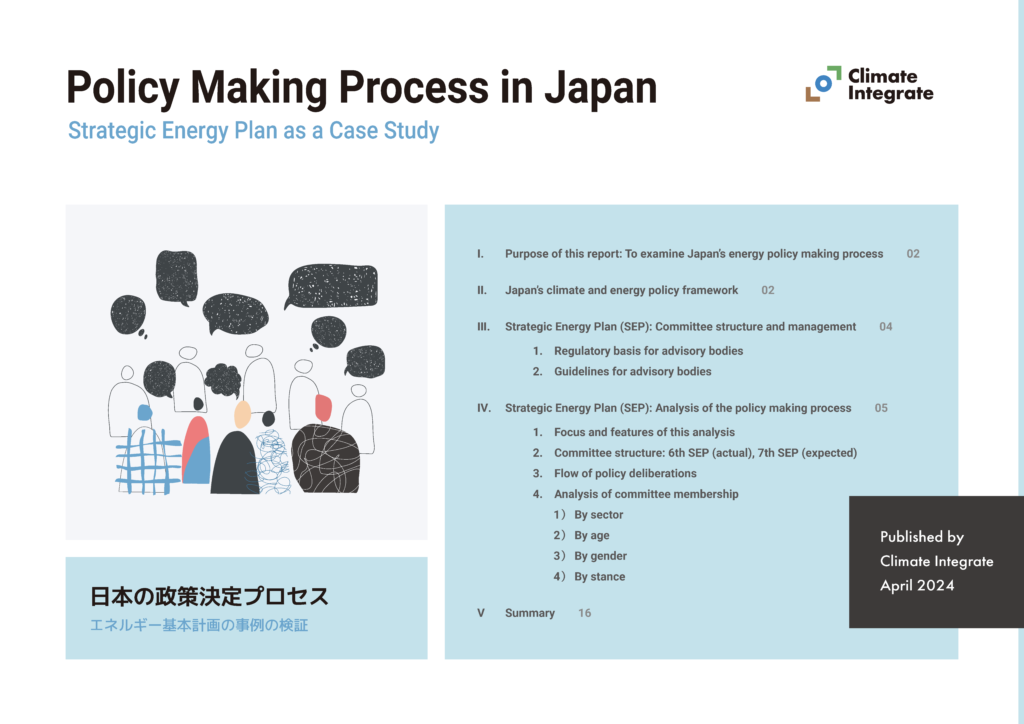

Japan’s Strategic Energy Plan, reviewed every three years, and nationally determined contribution (NDC), including the government’s greenhouse gas emission reduction targets, are scheduled to be formulated during fiscal year 2024. While the contents of policies are important, it is also very important that they be developed through fair and transparent deliberation processes.
Using the Strategic Energy Plan as a case study, this report examines the reality of Japan’s policy making processes based on publicly available information, including materials from governmental advisory bodies.
Contents
I. Purpose of this report: To examine Japan’s energy policy making process
II. Japan’s climate and energy policy framework
III. Strategic Energy Plan (SEP): Committee structure and management
1. Regulatory basis for advisory bodies
2. Guidelines for advisory bodies
IV. Strategic Energy Plan (SEP): Analysis of the policy making process
- Focus and features of this analysis
- Committee structure: 6th SEP (actual), 7th SEP (expected)
- Flow of policy deliberations
- Analysis of committee membership
1) By sector
2) By age
3) By gender
4) By stance
Ⅴ. Summary


